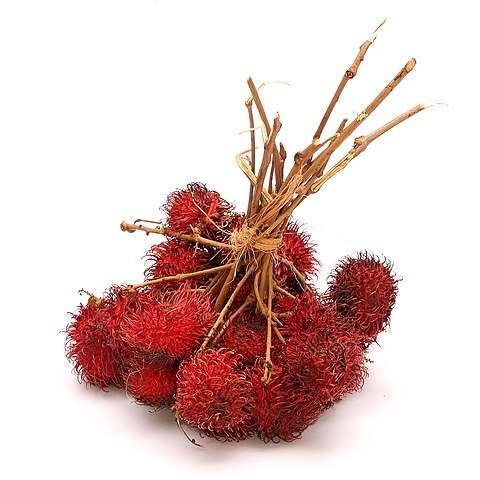Tree, up to 45 m high, dbh up to 1.30 m, with up to 1.50 m high buttresses. Twigs 3 mm thick, puberulous but mostly early glabrescent. Leaves 1-3-jugate; petiole 2-5 cm long, 1-1.5 mm thick, terete to semiterete; axes puberulous, glabrescent; petiolules 3-4 mm long, above narrowly deeply grooved. Leaflets elliptic to ovate, 5-10.5 by 1.5-3.25 cm, index c. 3, pergamentaceous, above glabrous or sometimes slightly puberulous in the basal part of the midrib, beneath sparsely hairy in midrib and nerves, fairly densely minutely sericeous in between, glabrescent; domatia common; base oblique, acute, slightly to not attenuate; sides curved; apex acute to tapering acute-acuminate; midrib above sunken in a narrow groove, nerves 0.5-1 cm apart, above prominulous to flat, intercalated veins often well developed, making the nervation somewhat irregular, veins and veinlets above hardly different, beneath veinlets inconspicuous, reticulation above rather dense, prominent. Inflorescences pseudoterminal or terminal. Flowers: only old female ones available. Sepals 5, c. 10-20% connate, c. 2 mm long, densely hairy on both sides. Petals absent or some reduced ones present. Disc glabrous. Stamens unknown. Ovary 2-celled, often both lobes at least in the beginning equally developed, densely warty with an indument of caducous long hairs and densely puberulous. Fruits probably warty and puberulous.
Trees, rarely shrubs, monoecious or dioecious. Leaves paripinnate, alternate, petiolate; leaflets entire. Thyrses terminal or axillary. Flowers unisexual, actinomorphic, small; bracts and bracteoles small. Calyx cupular, 5-or 6-lobed; sepals small, valvate or imbricate, often opening early. Petals absent or 5 or 6. Disk annular, entire or lobed. Stamens (male flowers) 6-8, exserted; filaments villous. Ovary (female flowers) obcordiform, 2(or 3)-lobed, 2(or 3)-loculed, densely tuberculous; ovules 1 per locule; style inserted between ovary lobes; stigma 2-or 3-lobed. Fruit deeply parted into 2 or 3 schizocarps, usually 1 developed, ellipsoid; pericarp leathery, with soft spines. Seeds same as schizocarps in shape; arillode fleshy, adnate to testa, thoroughly covering seeds; embryo arched or slightly straight, cotyledons thick. 2n = 22.
Trees or less often shrubs. Leaves alternate, paripinnate; leaflets distinctly glaucous beneath. Inflorescences axillary or distal (also cauliflorous in N. cuspidatum), simple or paniculate thyrses. Flowers actinomorphic, diclinous; calyx cup-shaped, with valvate aestivation, sepals free or connate at base, 4-6 subequal; petals wanting or 4-6, clawed, with a bilobed appendage (seemingly connate, reflexed, basal margins); disc annular; stamens 4-10; ovary (1)2(-4)-carpellate, with a single ovule per carpel, style elongated, stigma 2(3)-lobed, elongated and usually coiled. Fruits 1(2)-coccate, tardily loculicidally dehiscent, the pericarp warty, tuberculate or echinate, coriaceous or less often woody or corky. Seeds completely covered by edible sarcotesta.

